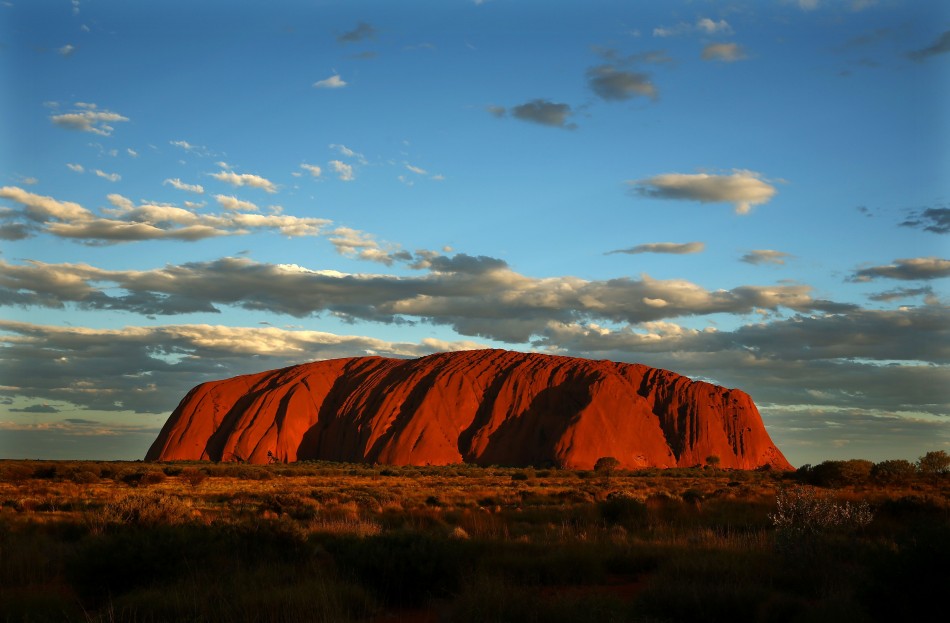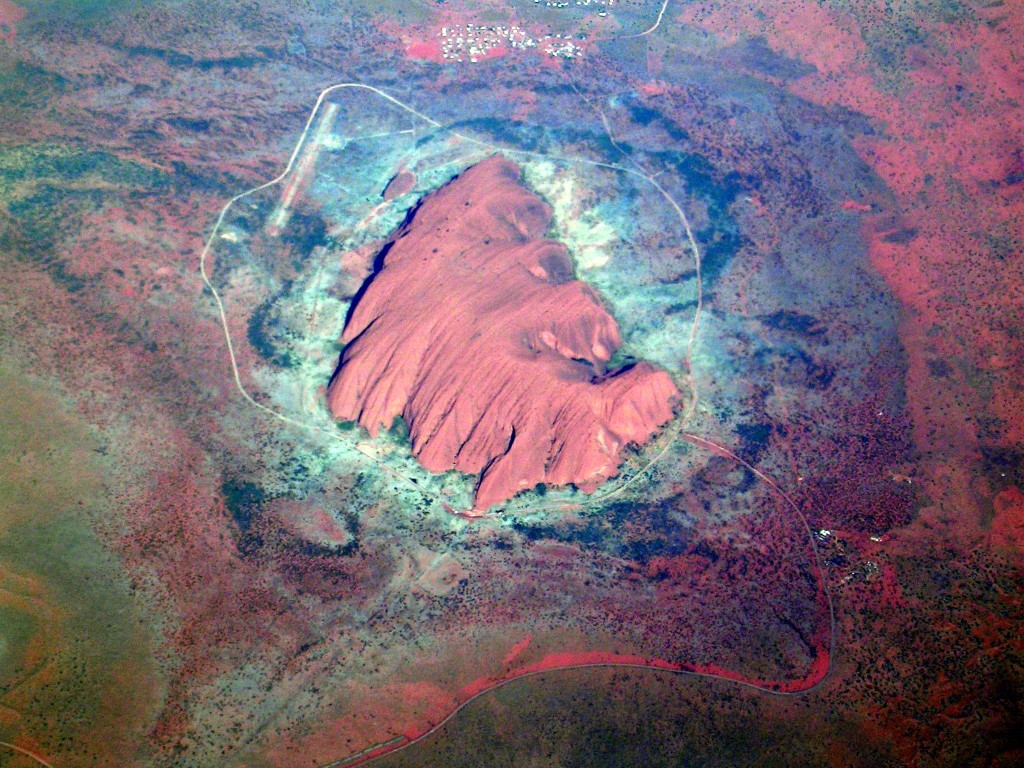Photo by Mark Kolbe/Getty Images.
Stephen Smith said:
In the center of Australia are three of the strangest rock formations found on Earth. Uluru is suggestive of martian topography: scalloped edges, polygonal patterns cut into the rock, dunes, raised mounds, and small craters. The action of electric arcs moving through rock strata could have gathered all the materials extant in the Australian outback into these creations.
Here there are some more pictures of the same mountain:
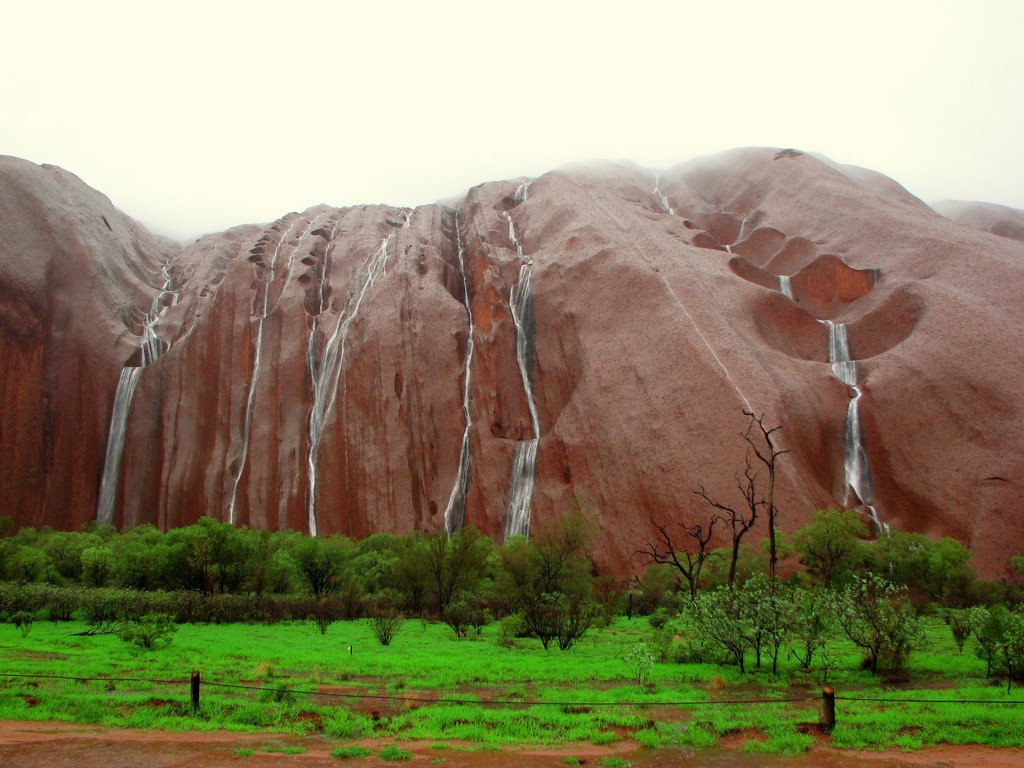
Ulururu Waterfalls. Photo from Misadventures Mag. Notice the crater chains.
Please read carefully Michael Godspeed’s article The Craters Are Elctric (2007). Crater chains are also found elsewhere across the Solar System:
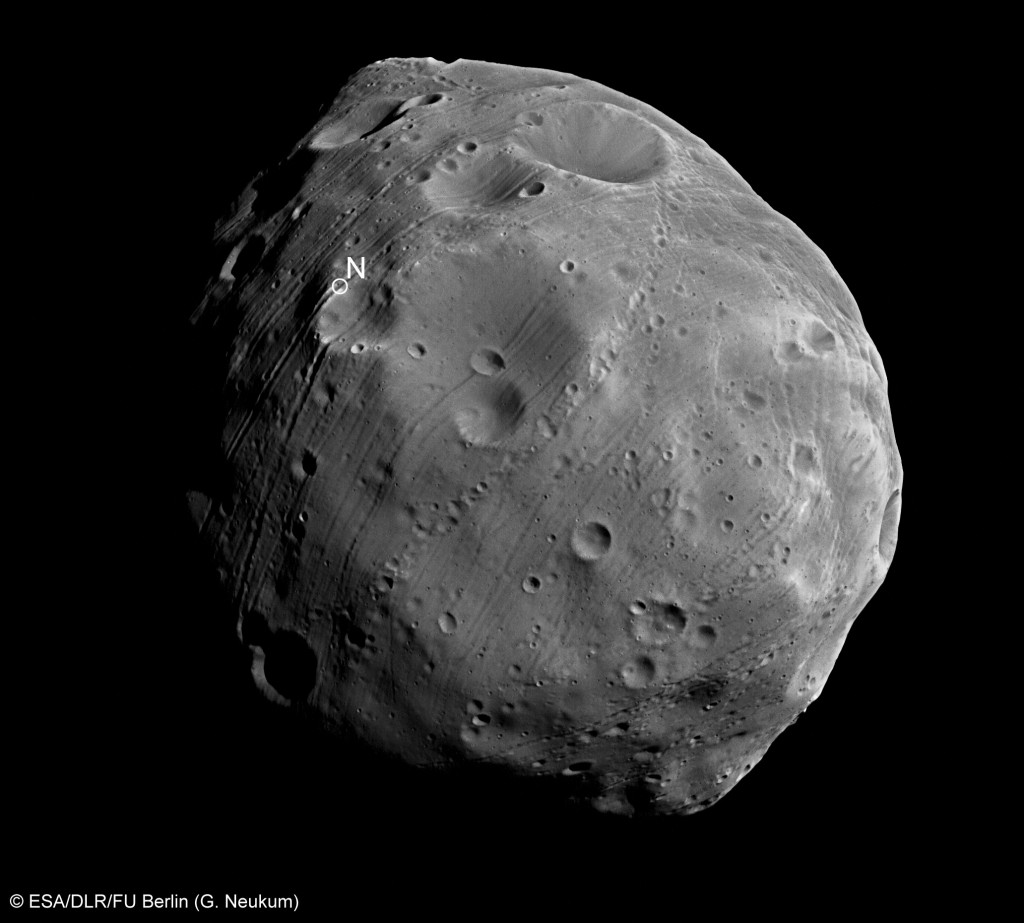
Close up of Martian moon Phobos. © ESA/DLR/FU Berlin (G. Neukum). This particular image was acquired on 28 July 2008 with the nadir channel of the HRSC. Mars Express was 351 km from Phobos at the time of exposure and the resolution is 14/pixel.
The image shows the northern hemisphere of Phobos marked with innumerable meteor craters. The sign N indicates the location of the North Pole.
While certain morphological similarities between Phobos and Uluru might seem striking, I would be cautious here before assuming a similar origin of them for both “bodies”. While grooves in Phobos seem to be made by exclusively by high density crater chains (in which there is no visible separation between one crater and the next), the grooves in Uluru look like strata. Also, regarding the crater chains themselves in Uluru, if you look closely the next photo, you’ll see very small vertical crater chains below what appears to be a broken block. Can erosion alone produce crater chains that are aligned with almost vertical strata?
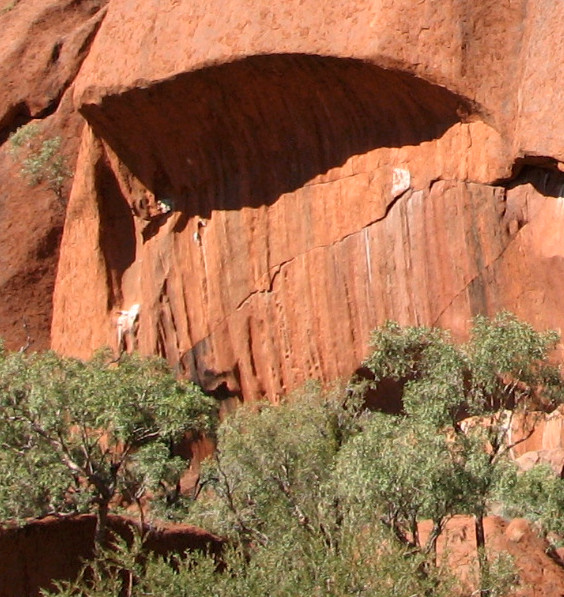
Uluru rock formations. Photo by Mark Andrews. CC BY-SA 3.0. Original photo here.
I am not sure how such a mountain could be formed there and I wasn’t there to witness it, but I suspect a catastrophist / electrical approach to geology might explain these sorts of formations better than “millions of years of erosion”.

